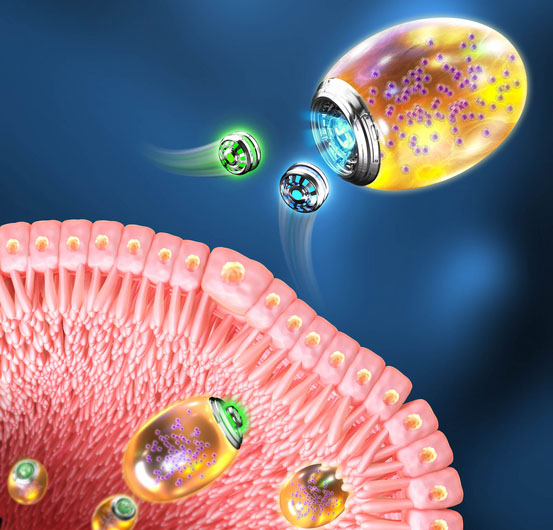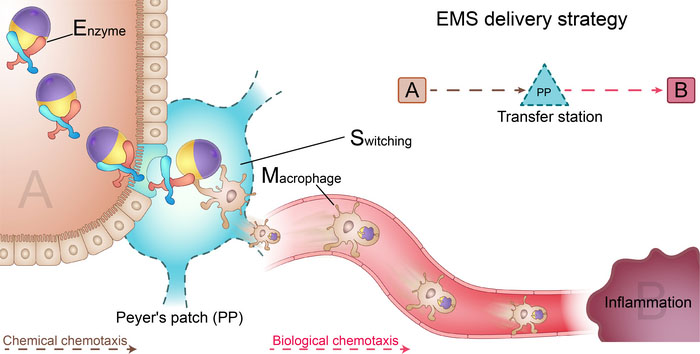| Feb 22, 2023 |
Twin-engine tiny robots for gastrointestinal inflammation therapy
(Nanowerk News) Micro- and nanorobots with self-propelling and -navigating capabilities have attracted extensive attention in drug delivery and therapy owing to their controllable locomotion in hard-to-reach body tissues.
|
|
However, developing self-adaptive micro/nanorobots that can adjust their driving mechanisms across multiple biological barriers to reach distant lesions is still a challenge.
|
|
Recently, a research team led by Prof. CAI Lintao from the Shenzhen Institute of Advanced Technology (SIAT) of the Chinese Academy of Sciences has developed a twin-bioengine yeast micro/nanorobot (TBY-robot) with self-propelling and self-adaptive capabilities that can autonomously navigate to inflamed sites to provide gastrointestinal inflammation therapy via enzyme-macrophage switching (EMS).
|
 |
| Yeast micro/nanorobots utilize twin-engine to self-propel in gastrointestinal intraluminal and extraluminal environments. (Image: SIAT)
|
|
This study was published in Science Advances ("Twin-bioengine self-adaptive micro/nanorobots using Q1 enzyme actuation and macrophage relay for gastrointestinal inflammation therapy").
|
|
The researchers constructed the TBY-robot by asymmetrically immobilizing glucose oxidase and catalase onto the surface of anti-inflammatory nanoparticle-packaged yeast microcapsules. At a homogeneous glucose concentration, the Janus distribution of enzymes can catalyze the decomposition of glucose to generate a local glucose gradient that induces TBY-robot self-propelling motion.
|
|
In the presence of an enteral glucose gradient, the oral TBY-robots move toward the glucose gradient to penetrate the intestinal mucus barrier and then cross the intestinal epithelial barrier by microfold cell transcytosis. "We found that TBY-robots effectively penetrated the mucus barrier and notably enhanced their intestinal retention using a dual enzyme-driven engine moving toward the enteral glucose gradient," said Prof. CAI.
|
|
After in situ switching to the macrophage bioengine in Peyer's patches, the TBY-robots autonomously migrate to inflamed sites of the gastrointestinal tract through chemokine-guided macrophage relay delivery. "Encouragingly, TBY-robots increased drug accumulation at the diseased site by approximately 1000-fold, markedly attenuating inflammation and ameliorating disease pathology in mouse models of colitis and gastric ulcers," said Prof. CAI.
|
 |
| EMS delivery of TBY-robots for long-distance transport across multiple biological barriers. (Image: SIAT)
|
|
This twin-bioengine delivery strategy is a sequence-driven process using EMS, with Peyer's patches as transfer stations. This process can precisely transport therapeutics across multiple biological barriers to distant, deep-seated disease sites.
|
|
"The transport route is similar to that of the Express Mail Service, which precisely delivers parcels to a distant destination using different transportation facilities," said Prof. CAI. These self-adaptive TBY-robots represent a safe and promising strategy for the precision treatment of gastrointestinal inflammation and other inflammatory diseases.
|


